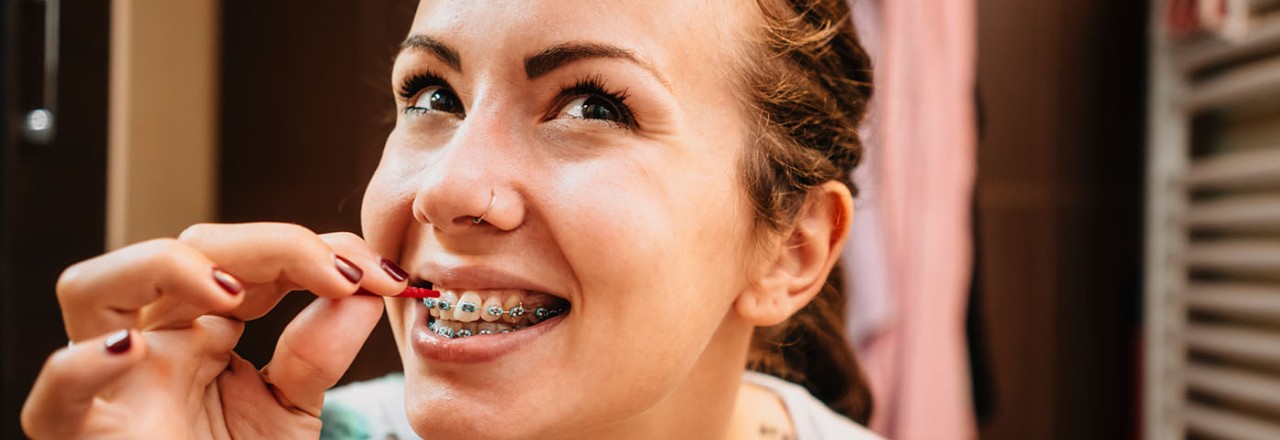Braces 101

Want straight teeth? Braces are one of the most popular ways to go. This orthodontic appliance is usually placed in patients ages 12 to 15 to correct crooked or overcrowded teeth.
“The benefits of braces are many,” said Dr. Daniel Croley, DMD, chief dental officer for Delta Dental. “While standard braces and orthodontic aligners give you straight teeth, they can also improve your health and well-being, from aligning your bite to reduce headaches or jaw joint pain, to restoring ideal tooth alignment to help your teeth and gums stay healthy.”
Braces were traditionally just shiny gray metal bands for straightening teeth. But now, braces come in colors (even sparkles!), and health troubles as varied as headaches, jaw pain, earaches, mouth breathing and sleep apnea can be potentially alleviated with proper alignment of the teeth and jaws. Many adults are wearing braces now, too.
Below are some answers to questions about staying comfortable and healthy while wearing braces.
Why is good oral hygiene with braces so important?
Food and plaque can get trapped in the tiny spaces between braces and wires, causing decay and enamel stains. Food can also react with the bacteria in your mouth and the metal in the braces to produce a bleaching effect, which can cause small, permanent light spots on the teeth. Remember to brush after eating and use floss to clean braces and under wires to prevent decay and stains.
How should teeth and braces be cleaned?
You should brush after every meal and use a floss threader or special orthodontic floss (available at drug stores) at least once a day to clean between braces and under wires. Check your teeth in a mirror to make sure all food particles are gone. If you don't have your toothbrush with you, rinse your mouth vigorously with water. Brush as soon as possible once you return home.
How do braces feel?
The wires that are used to move teeth into position are usually tightened at each visit to the dentist or orthodontist. This causes pressure on the teeth and some discomfort. Eating soft foods and taking a pain reliever, such as acetaminophen, can help. Also, braces can rub against the inside of the lips. If this is a problem, place wax on the wires to keep them from chafing (available from your dentist or orthodontist and at drug stores).
How long do I have to wear braces?
It depends on how complicated the spacing or occlusion (bite) problem is. Most people wear braces for 18 to 30 months. After your braces are removed, you'll wear a retainer, which is used to maintain the position of the teeth while setting and aligning the tissues that surround the newly straightened teeth.
Should I avoid any particular foods while wearing braces?
Yes. Some foods can promote tooth decay or damage your braces.
- Sugary and starchy foods. These can promote tooth decay and gum disease.
- Sticky and chewy foods. Foods such as caramel, taffy, chewing gum or dried fruits can stick to braces and are difficult to remove.
- Hard foods. Foods such as hard candies, nuts, ice, beef jerky and popcorn can break wires and loosen brackets. Avoid damaging wires on the front teeth by cutting carrots, apples and other crunchy, healthy foods into bite-sized chunks before eating them.
Last updated October 12, 2021
Related articles:
The oral health information on this website is intended for educational purposes only. Always consult a licensed dentist or other qualified health care professional for any questions concerning your oral health.


